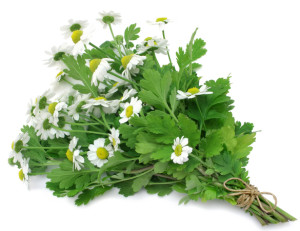How to Overcome Migraines Naturally
The migraine headache is one of the top 20 most debilitating disorders in developed countries. It is caused by a complicated interplay between predisposing genetic variants and environmental factors. How to overcome migraines? There are all kinds of treatments that can help, including natural remedies discussed below.
First, consider that migraines are more than head pain; in fact, some people have no head pain at all. The symptoms, incidence, and severity of migraines vary by individual. A typical migraine attack consists of four phases:
- Prodrome. Symptoms including emotional changes, urinary frequency, fluid retention, and stiff neck may start up to 48 hours prior to the migraine.
- Aura. Approximately 25 percent of patients experience an aura prior to the headache that lasts less than an hour.
- Headache. The headache phase generally builds in intensity, is experienced on one side of the head in 60 percent of patients, and is often throbbing, with sensitivity to light, noise, odors, and movement. Nausea, vomiting, blurred vision, and cognitive impairment may be present.
- Postdrome. After the pain resolves, fatigue, irritability, or euphoria may last a day or longer.
Below, we address migraine causes and treatments.
Migraine Triggers Are Common
People suffering from migraines tend to have recurring attacks triggered by foods, hormonal changes (female hormonal cycles, hormone replacement, oral contraception), and/or stress (emotional, physical/excessive exercise, fasting/hypoglycemia, sleep deprivation).
Migraine headaches may also be precipitated by let-down from stress (relaxation after stress), irregular sleep patterns, odors, weather changes, and exposure to bright light. Different migraine sufferers respond to different triggers.
Get Your Nutrition Guide
Do you want to eat foods that help you feel better, stay slim, and avoid diet-related diseases? Do you want to be healthier by eating delicious “super” foods?
If so, claim your FREE copy, right now, of the definitive nutrition guide on living a longer, healthier, happier life.
Migraine Diagnosis and Conventional Migraine Treatment
Diagnosis of a migraine headache is based on the history of symptoms, physical examination, and, sometimes, neurological (nerve) tests to rule out other conditions.
The current standard migraine treatments involve acute and preventive therapy with pharmaceuticals. Patients with frequent attacks usually require both. For acute treatment, drugs called triptans are usually prescribed.
For migraine prevention, beta blockers and anticonvulsants are commonly used. All of these medications are associated with side effects that are beyond the scope of this article.
How to Overcome Migraines Naturally
Most natural and integrative doctors will attest that you can heal your migraines by eliminating trigger foods and taking high-quality supplements. Lifestyle changes in such areas as sleep hygiene, regular exercise, and stress management are often beneficial as well. And a headache diary is invaluable for identifying triggers, determining patterns, assessing headache frequency, and monitoring the response to treatment.
Eliminate trigger foods: Getting trigger foods out of your diet is usually the fastest route to ridding yourself of migraines.

A recent study conducted by the Journal of Headache and Pain showed that following a plant-based, high-fiber, low-fat diet may play an important role in decreasing migraine pain.It is highly beneficial to undertake a systematic “elimination and challenge” diet. An integrative physician can guide you through the process or you can do it yourself.
For at least two weeks, and preferably longer, eliminate all foods containing gluten, dairy, eggs, yeast, corn, sugar, citrus, coffee (if you’re a regular caffeine drinker, gradually reduce your caffeine intake over a two-week period prior to embarking on the elimination diet), chocolate, alcohol, food additives (MSG, nitrates and nitrites), aspartame and other sweeteners, and sulfites (found in wine, salad bars, dried fruits).
After at least two weeks of strict elimination, challenge each food individually by eating a normal-sized serving of food containing that ingredient twice in one day, followed by two days of paying close attention to your symptoms. If any ingredients you test appear to trigger a migraine, eliminate it from your diet. Wait for your migraine attack to fully pass, and then resume challenging additional foods until you’ve made it through the entire list.
An alternative option is to undergo IgG food allergy testing to identify potential trigger foods. You can then base your elimination diet on your test results.
Look for high-quality supplements: High-quality nutritional supplements and botanical extracts can prevent and treat migraines. Here are the top five.
- CoQ10, magnesium, riboflavin: One of the main underlying causes of migraine is mitochondrial dysfunction within the brain, which makes neurons hyper-excitable and hyper-responsive to triggers. CoQ10, riboflavin (vitamin B2), and magnesium are three key nutrients involved in brain mitochondrial function and studies show that supplementing with high doses of these nutrients can help to overcome mitochondrial impairment, improving brain energy metabolism and ultimately reducing migraine attacks.[3] The recommended dosages are:
- Riboflavin: 400 mg once a day
- CoQ10: 100 mg two to three times a day, preferably a form of CoQ10 with superior bioavailability, such as QBest by Thorne Research
- Magnesium (as citrate, malate, aspartate, taurate, or amino acid chelate): Dose as high as you can tolerate.
- Feverfew extract: Feverfew has been used as a pain reliever and fever reducer for centuries.[4] Numerous animal and test tube studies have found feverfew to have pain-relieving and anti-inflammatory effects. A constituent in feverfew called parthenolide is likely primarily responsible for these actions.[5]
FYI
MIGRAINE RELIEF STRATEGIES: THE BASICS
- Eat regularly scheduled meals. Try eating a light snack one hour before bed to stabilize your blood sugar.
- Sleep consistency. Lack of consistent sleep is another common trigger. Go to bed before 10 p.m. and minimize or eliminate screen time for at least two hours before bedtime. And avoid sleeping in.
- Stress reduction/relaxation therapy. Epsom salts baths are fantastic for both stress relief and as a source of magnesium. Both of these are effective for reducing migraines. Deep breathing and meditation are phenomenal for stress relief.
The results of human studies are mixed, but the most recent study found that a standardized feverfew extract reduced migraine frequency from 4.8 to 2.9 per month.[6]
The studies do not clearly suggest an optimal type or dosage, but feverfew is considered safe and is widely reported to be helpful. Try a supplement that combines dried feverfew leaf powder and standardized extract, such as Nature’s Way Feverfew Standardized or NOW Feverfew. Take one capsule (around 300 mg combined leaf powder and standardized extract), three times daily.
For acute migraine attacks, a sublingual feverfew supplement called LipiGesic M was found to significantly relieve migraine pain in 64 percent of patients who were instructed to use it as early as possible in the attack.[8]
- Butterbur extract: Clinical studies have validated the efficacy of butterbur (Petasites hybridus) for preventing migraines.[9,10]
The American Academy of Neurology and the American Headache Society state: “Petasites (butterbur) is effective for migraine prevention and should be offered to patients with migraine to reduce the frequency and severity of migraine attacks.”[11] The safest way to take butterbur extract is to take 50 mg of Petadolex® butterbur extract three times daily for one month and then decrease to 50 mg twice daily for up to four months for migraine prevention.
Petadolex is verified to be free of alkaloids that can damage the liver, but the long-term safety of butterbur extract is controversial.[12,13] For these reasons, do not purchase other brands of butterbur and do not take any butterbur extracts, even Petadolex, if you have liver disease or are pregnant or breastfeeding.
Getting Started
You can learn how to overcome migraines by identifying and eliminating your trigger foods, taking brain nutrients, and using herbal medicines. Feel free to try any of the above recommendations separately or in combination.
For further information on migraine headaches, see these University Health News posts:
- “Migraine Medication That Can Ease Your Pain—and Home Remedies That May Help“
- “Melatonin and Migraines: A Surprising Treatment for Migraine Sufferers“
WHICH HEADACHE?
Headaches can bring with them various symptoms and for different lengths of times. See these related University Health News articles:
- “Dehydration Headache? Know the Causes, Signs, and Symptoms”
- “Ice Pick Headache Signs and Symptoms”
- “Cluster Headaches: How They Happen”
- “Exertion Headaches: How They Happen”
- “Tension Headache: What Causes It, How to Manage It”
- “What’s the Difference Between a Sinus Headache and a Migraine Headache?”
- “Headache Behind Eye? How to Spot Potential Brain Aneurysm Symptoms”
1. Headache. 2013 Mar;53(3):427-36.
2. Headache. 1999 Jul-Aug;39(7):494-501.
3. Neurology. 1998 Feb;50(2):466-70.
4. Pharmacogn Rev. 2011 Jan-Jun; 5(9): 103–110.
5. Pain. 2013 Dec;154(12):2750-8.
6. Cephalalgia. 2005 Nov;25(11):1031-41.
7. Cochrane Database Syst Rev. 2015 Apr 20;4:CD002286.
8. Headache. 2011 Jul-Aug;51(7):1078-86.
9. Altern Med Rev. 2001 Jun;6(3):303-10.
10. Neurology 2004 Dec 28;63(12):2240-2244.
11. Neurology. 2013 Feb 26;80(9):868.
12. Botanics: Targets and Therapy. 2014;4:1-9.
13. NCCIH Publication No.:D464. 2012 Apr.
Originally published in 2016, this post is regularly updated.
The post How to Overcome Migraines Naturally appeared first on University Health News.
Read Original Article: How to Overcome Migraines Naturally »
Powered by WPeMatico




